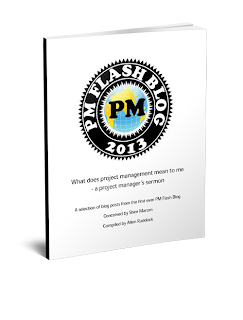Validation and Verification: traditionalists know these ideas well. Do they still have relevance in the Agile space?
My opinion: Yes!
Traditional V-and-V: the way it is
Agile: what's to verify; what's to validate?
The BIG QUESTION: Is the strategic intent of the narrative answered? Is the business case on a path to success?
After all, the grand bargain in Agile is that flexibility for tactical implementation is allowed insofar as there is faithfulness to the strategic intent. Tactics are fluid; strategy is not.
If not, back to the sponsor for guidance and direction
Traditional V-and-V: the way it is
Traditional projects rely on validation and verification (V-and-V) for end-to-end auditing of requirements:
- Validation: the requirements ‘deck’ is validated for completeness and accuracy.
If there are priorities expressed within the deck, these priorities are also validated since priorities affect resource utilization, sequencing, and schedule. - Verification: After integration testing, the deck is verified to ensure that every validated requirement was developed and integrated into the deliverable baseline; or that changed/deleted requirements were handled as intended.
Agile: what's to verify; what's to validate?
The BIG QUESTION: Is the strategic intent of the narrative answered? Is the business case on a path to success?
After all, the grand bargain in Agile is that flexibility for tactical implementation is allowed insofar as there is faithfulness to the strategic intent. Tactics are fluid; strategy is not.
Agile V-and-V: the way to do it
Certainly, Agile projects are less amenable to the conventional V-and-V processes because of the dynamic and less stationary nature of requirements.
Certainly, Agile projects are less amenable to the conventional V-and-V processes because of the dynamic and less stationary nature of requirements.
- Validation: After the business case is set, the top-level narrative is in place, and the overall strategy of the project is framed, some structured analysis can occur on the top level requirements.
- If there are priorities expressed within these business case requirements, these priorities are also validated
- Conversational-style requirements -- aka, stories -- are also validated, typically after the project backlog or iteration backlog is updated.
- Verification: After integration testing, the deliverable functionality is verified to ensure that every validated conversation was developed and integrated into the deliverable baseline; or that changed/deleted conversations were handled as intended.
- During development, expect some consolidation of stories, and expect some use (or reuse) of common functionality.
Thus, recognize that Agile may not maintain a fully traceable identify from the time a conversation is moved into the design and development queue to the time integration testing is completed. However, the spirit of the conversation should be there is some form. It’s to those conversational forms that verification is directed.
If not, back to the sponsor for guidance and direction
Read in the library at Square Peg Consulting about these books I've written
Buy them at any online book retailer!
Read my contribution to the Flashblog


